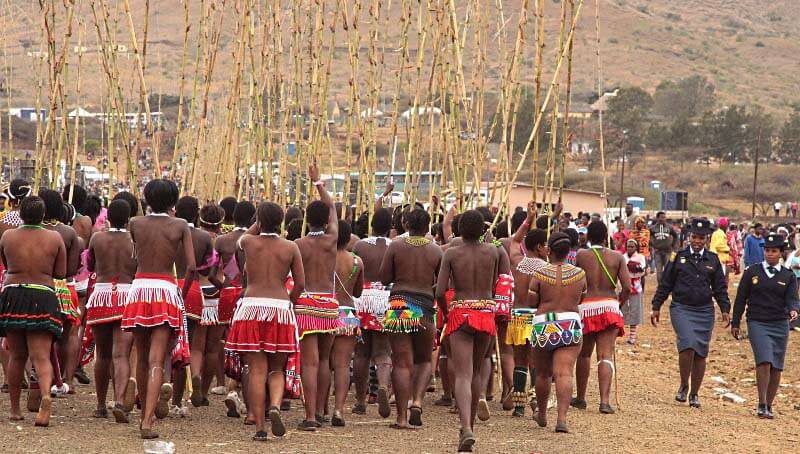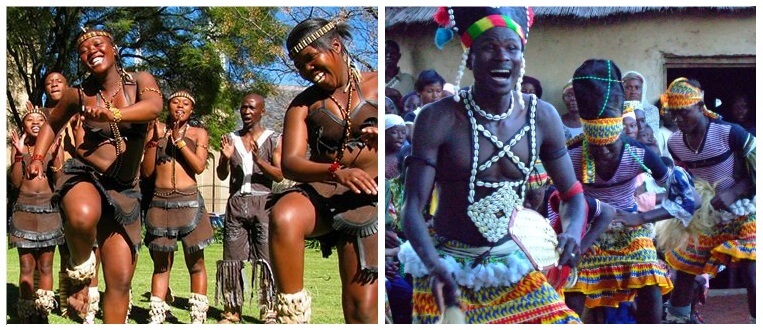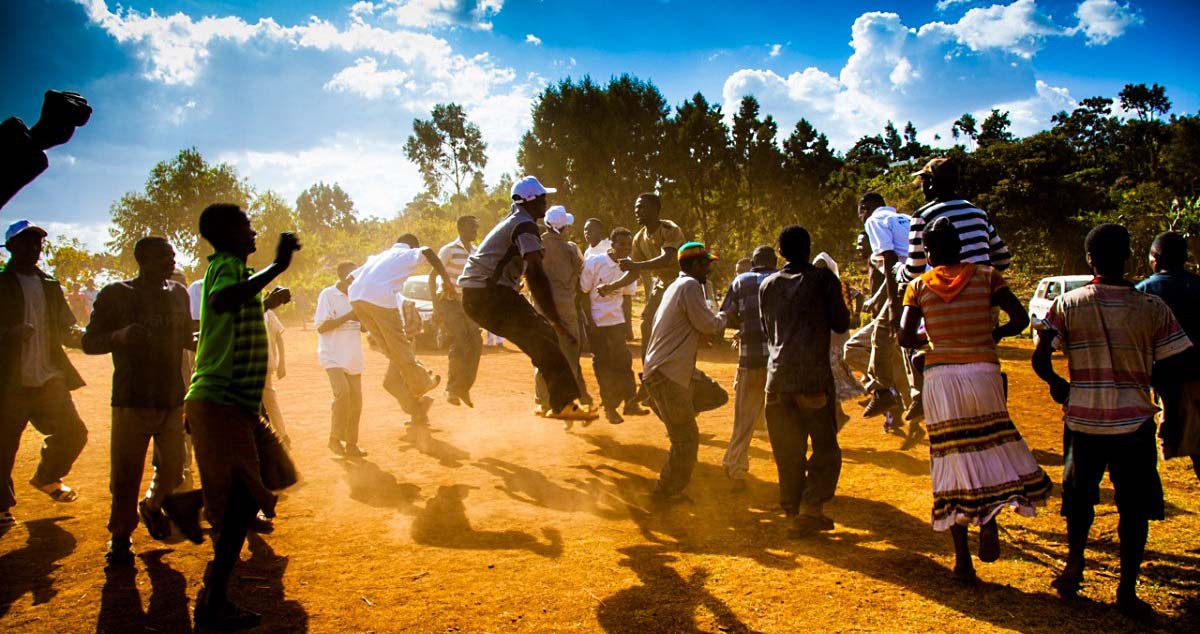Dance and performing arts are deeply woven into the social fabric of Africa. Keita Fodeba defined African movements (danse) as “a spontaneous emanation of the people that is part of their everyday lives“. The term African dance mainly refers to dance in Sub-Saharan Africa and is largely based on cultural differences in music and lifestyle. It can be used to teach social lessons and values, praise and criticise, celebrate and mourn, worship and scorn etc.
Africa being the most culturally diverse continent on the planet reflects a wide spectrum of histories, patterns and meanings in dance, even among cultures with similar backgrounds. Usually accompanied with isochronal sounds and spiffy melodies, dance is normally composed of rhythmic pulses and percussive patterns. Dancers are assessed by their ability to follow the musical rhythm. In some cultures the rhythmic patterns are expressed in foot patterns, in others in contractions of the torso, strong shoulder beats, rapid vibrations or twists of the buttocks, or acrobatic leaps
The Social Context
In many African cultures, dance and songs help define the role of an individual or group within the community. In hierarchical communities, a ruler may be expected to perform certain dances, and sometimes failure to meet the required standard may seriously affect his/her reputation and prestige.
For example, at the crowning of an oba (king) in Yorubaland, the ruler dances through the town in royal and dignified steps. His wives follow respectfully with their own dance. When the oba is seated in state, his war chiefs, hunters & Palace chief greet him, each with their appropriate dance steps and distinctive music.
Dance may also be officially used in funerals. In some cases, in the Cameroonian Fulani societies, a corpse is placed in a sitting position in a prominent place. Solo and communal dances in circles are performed in honor of the deceased.
For the younger ones, it may serve several purposes. In some societies in West Africa, boys have their own masked dances in training to be accepted into adult societies.. Throughout Africa, children generally enjoy dance games. The Makindu boys of Kenya for example sing as they play leapfrog in dancing rhythm.
Gender Differences
Dance may be expressed in different forms by different sexes in Africa. Tiv men dance with an attack of rapid, forceful movements to express masculinity, whereas the women dance with a sustained grace to reflect their femininity.
It may also symbolize formalized flirtation between the sexes before marriage, as in the Sikya dance of the Akan of Ghana. The Bororo of western Cameroon celebrate the coming of the dry season with a dance for young men and women, and couples pair off at the climax of the performance. The dances of Ika men and girls (western Igbo, Nigeria) have become openly erotic since the early 1960s, when a master dancer brought the sexes together in a single dance team to entertain visitors to the palace of the oba of Agbor in Nigeria.
Umhlanga, or Reed Dance ceremony, is an annual eight day Swazi and Zulu cultural event. Tens of thousands of unmarried and childless Swazi girls and women travel from the various chiefdoms. As part of the ceremony, the young women dance bare-breasted for their king, and each maiden carries a long reed, which is then deposited as they approach the king.
The girls choose only the longest and strongest reeds, and then carry them above their heads in a slow dance movement up the hill. If the reed should break before the girl reaches that point, it is considered a sign that the girl has already been sexually active.

Girls at Umhlanga dance bare-breasted holding their reeds
Change, Westernisation & Cross Cultural Adoption
Music is regarded as a highly essential element in dancing. Diffusion and influence of non-African music in African societies have led to mixed trends in dance culture. After World War II, hybrid forms of dance emerged that integrated traditional African dances with European and American dance influences. Highlife for instance, a style of urban recreational dance popular in West Africa in the 1950s was the most famous of these forms. It originated in Ghana, where musicians adopted Western dance-band instruments at open-air nightclubs to celebrate the exuberant spirit of independence.
Francophone countries elaborated the Latin American rhythms of the cha-cha. These have given way to styles influenced by Caribbean reggae and Western pop music, although they retain a distinctly African character.
Another angle is the growth of Afro-beat or Afro-HipHop within most West, East and Southern African countries. This has led to the creation of new dance styles that are African but have a stint of Western flavor. Popular Music groups such as P-Square of Nigeria are well known for introducing dance patterns that gain general adoption e.g Alingo . Azonto, also a dance from Ghana is very popular. The dance is known to have originated from a traditional dance called Kpanlogo. Ghanaian footballer Asamoah Gyan and Togolese football star Emmanuel Adebayor have performed the dance as part of their goal celebrations. Following the worldwide interest in the Ghana’s Azonto dance, and the name of Azonto itself is being used for a varieties of entertaining activities, such as Azonto Petroleum. Other popular West & South African Dances include Ethighi, Kukekre , Bobaraba, Hlokoloza etc.

-Nigerian Popstar P-Squre introduce their dance move – Alingo .
– A group of Ghanians dance Azonto
Dance is the most popular form of recreation in Africa. In towns, men and women of all ages meet informally in dance clubs to dance to the rhythms of popular musicians as this serves as a base for other social activities among sexes and strata ranges.
African dance is integrated in the culture, some think certain parts are being diluted by westernisation. Others just feel it evolved to adapt.

[Header image]– Photo credit: Joni Kabana for Mercy Corps

